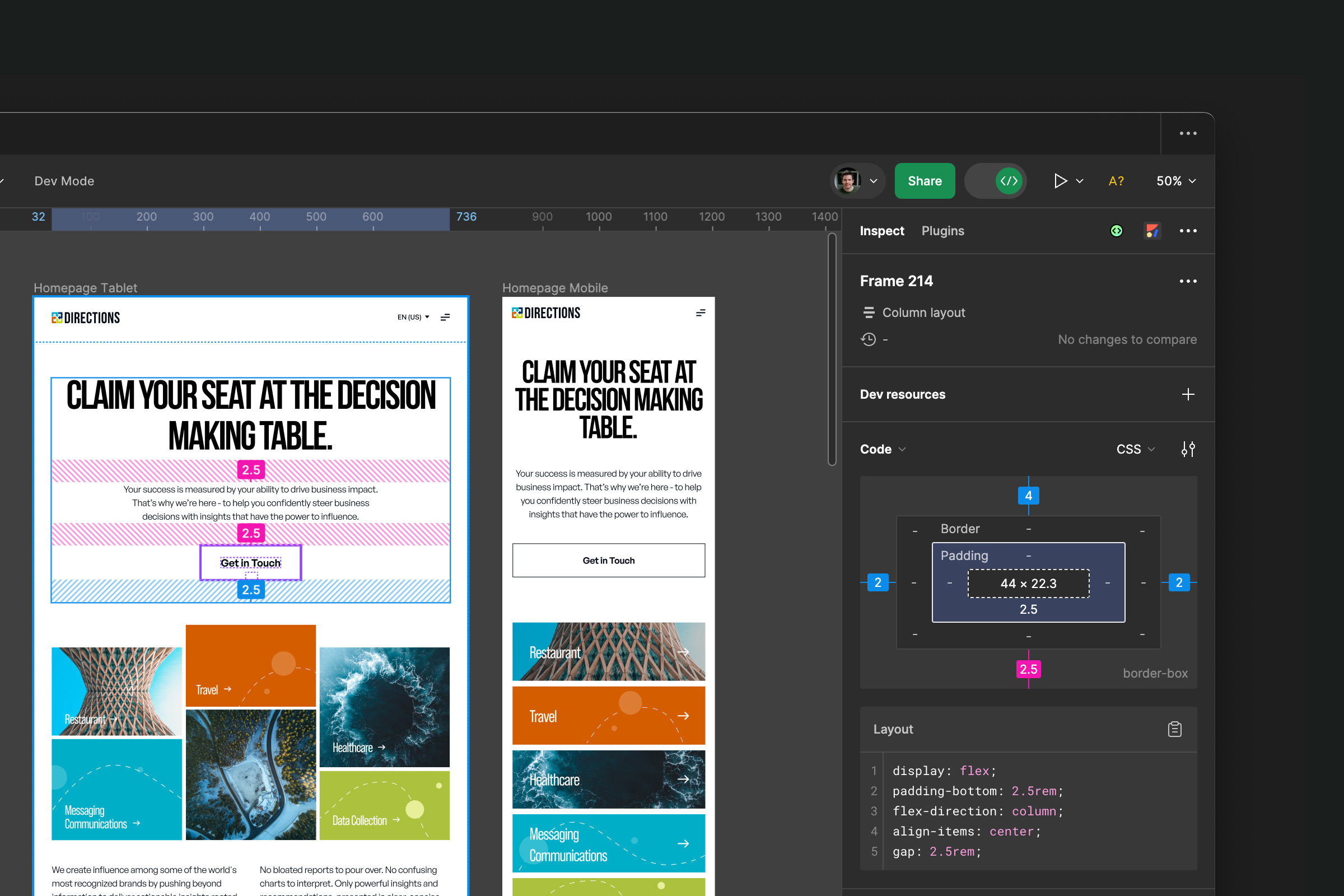Driving Results: How Analytics Can Transform Your Content Marketing Strategy

Guesswork is dead.
Sure, you might get lucky on occasion with a good blog article or social media post, but with competition being as fierce as it is, you can’t afford to be imprecise and unfocused when it comes to content.
When you’re looking to really elevate your content marketing, integrating content marketing analytics has never been more important than it is now.
It's all about leveraging data to truly understand and engage your audience. By analyzing how users interact with your content, from blog posts to social media updates, you can uncover what resonates, driving both engagement and conversion rates up.
This deeper dive into analytics arms you with the insights to fine-tune your strategy, ensuring your content not only meets, but exceeds audience expectations (not to mention leaves your competition in the dust).
So let's explore how analytics can transform your approach, optimize your content's performance, and significantly impact your marketing outcomes.
Ready to make your content work smarter? Here's how to harness the power of data for compelling content marketing.
Target audience: identifying and understanding your audience
Before you can tailor your content to your target audience, you need to actually know WHO they are. To ensure your content meets the mark, consider these key steps:
- Set specific objectives: Clearly define what you aim to achieve, such as enhancing brand awareness or increasing sales.
- Leverage analytics tools: Utilize these tools to gather valuable insights on audience demographics, geographic locations, and online behaviors.
- Develop customer personas: Craft detailed profiles of your target audience based on analytics data.
- Customize content: Align your content with the identified preferences and behaviors of your audience.
- Monitor and adjust: Regularly assess content performance using key metrics and apply A/B testing to refine your strategy.
Understanding your audience through analytics paves the way for more impactful content marketing. By setting clear goals, analyzing audience data, and tailoring content accordingly, you can enhance user engagement and conversion rates more effectively. This strategic approach ensures your content marketing efforts are both relevant and resonant, driving better outcomes.
Applying data-driven content strategy
By harnessing data, creators can craft content that doesn't just captivate but also aligns precisely with marketing goals and broader business objectives. The era of "post and pray" has been replaced by an informed approach where data guides content creation, optimization, and strategy refinement, ensuring content speaks directly to the target audience with tailored, personalized messages.
Harnessing in-depth insights for strategic content planning
Deep insights from data, including page views, bounce rates, and conversion metrics, form the cornerstone of any effective content strategy. Tools like Google Analytics offer a window into the user's journey, revealing engagement hotspots and disengagement pitfalls. Beyond basic analytics, competitor analysis, and keyword research unveil content voids and opportunities, charting a path for strategic reach and engagement. Armed with a nuanced understanding of industry movements and audience inclinations, marketers can craft standout content, precisely targeting the market's pulse.
Strategic steps for insightful content creation:
- Conduct comprehensive competitor scrutiny and exhaustive keyword exploration.
- Employ analytics tools for detailed audience insights.
- Decode user engagement patterns and preferences.
- Customize content themes and formats to align with these insights.
Defining additional key metrics and KPIs
Key Performance Indicators (KPIs) serve as the navigational beacons for content marketers, illuminating the path to success. Vital metrics include page views, click-through rates (CTR), and engagement indicators like social shares and comments, each offering insights into the content's reach, engagement ability, and conversion potential. By establishing and monitoring these KPIs, teams can pivot strategies towards enhanced results, ensuring every content piece is a step closer to achieving marketing excellence.
Want a full overview of KPIs? We have a full guide here.
Tailoring content to user behavior
A profound understanding of user behavior is crucial for devising content that truly resonates. Insights from analytics platforms paint a detailed picture of user interactions, from page bounce tendencies to blog engagement levels. This knowledge facilitates strategic adjustments in content layout, tone, and subject matter, ensuring alignment with user preferences. Incorporating A/B testing into content strategy allows for systematic experimentation, optimizing engagement and maximizing content impact.
Examples of adaptive content strategies for enhanced user interaction:
- Embed interactive features (e.g., quizzes, polls) to boost engagement.
- Integrate visual and multimedia elements to cater to diverse preferences.
- Develop in-depth focused guides for topics with high reader engagement.
- Optimize social media posting schedules based on user activity insights.
Optimizing content performance: our own real life examples
One of the best things about working in content marketing is being able to see opportunities for change, make educated decisions, and see the results come forward. Here are some of our favorite examples of using data to drive our content marketing strategies with visible success!

Scenario 1: SEO optimization using SKU numbers
Context and challenge: For our friends at Aftermarket Truck Parts, our initial findings showed traditional SEO strategies were not capturing the highly specific search behavior of potential customers. Initial data analysis revealed a unique opportunity tied to how customers searched for products.
Strategic approach: Utilizing insights from Google Search Console, it was found that customers frequently used SKU numbers (stock keeping units) in their search queries. This was a pivotal discovery, leading to a tailored SEO strategy that emphasized the visibility of these SKU numbers both on the website and within search engine results.
Implementation: To capitalize on this insight, SKU numbers were prominently displayed on product pages and included in the meta descriptions. This approach aimed to make it easier for high-intent buyers to find exactly what they were looking for, directly from the search results.
Outcome: The strategy led to a significant improvement in targeted traffic click-through rates and conversion rates. By focusing on these highly specific, low competition keywords, the client saw quick wins in SEO performance, demonstrating the value of leveraging unique product identifiers in search optimization.
This case study exemplifies the importance of utilizing specific data insights to guide SEO strategies, particularly for businesses with niche products or unique customer search behaviors.

Scenario 2: A/B testing for linkedIn paid ad campaign content
Context and challenge: First Source Electronics asked us to create and optimize a LinkedIn paid advertising campaign, aiming to enhance lead quality and engagement through conversation ads.
Strategic approach: Recognizing the potential of LinkedIn's messaging platform for direct engagement, an A/B testing strategy was employed to evaluate different outreach messages. This approach was designed to understand how variations in tone and content could impact response rates and lead quality.
Implementation: Four distinct versions of the initial outreach message were crafted, each varying in directness and persuasiveness. These variations aimed to capture a broad spectrum of responses, allowing for an in-depth analysis of audience reception and interaction.
Outcome: Through this methodical testing, two messages emerged as clear front-runners, significantly outperforming the others in terms of engagement and lead generation. This enabled a focused refinement of the campaign, leveraging the insights gained to fine-tune messaging for optimal impact.
This case underscores the effectiveness of A/B testing in paid advertising, demonstrating how nuanced adjustments to messaging can dramatically improve the success of digital marketing campaigns.

Scenario 3: personalized content strategy for diverse expertise levels
Context and challenge: This one is from our own company. We recognized the wide range of expertise among visitors to our website, from beginners who are trying to learn fundamentals, to marketing directors with advanced knowledge.
Strategic approach: Developed a multi-tier content strategy to serve both demographics effectively. This included creating introductory guides for novices and more detailed, specific content for experienced professionals.
Implementation: Surface-level guides were designed to lay the foundational knowledge for beginners, clarifying what services the company provides. For visitors with a deeper understanding, detailed service pages and a comprehensive Q&A platform were established to address high-level inquiries and specific concerns.
Outcome: This approach significantly improved engagement across the spectrum of visitor expertise. It ensured that every user, regardless of their knowledge level, found valuable and relevant information, enhancing user satisfaction and conversion rates.
This case study highlights the importance of audience segmentation in content strategy, demonstrating how personalized content can cater to diverse needs, driving engagement and conversions.

Content marketing analytics tools for measuring and reporting
Success is not just a matter of publishing frequently or garnering a high volume of views. True content marketing success comes from deep dives into analytics that reveal the effectiveness of marketing strategies and business outcomes. Utilizing analytics, marketers can track a variety of key performance indicators (KPIs) such as website traffic, engagement rates, conversion rates, and the all-important return on investment (ROI) to understand how well their content performs.
Here are our personal favorites when it comes to measuring content marketing success:
Google Analytics: This tool is essential for analyzing website traffic and user behavior, helping content marketers understand which pieces of content resonate with audiences. It provides detailed insights into visitor demographics, how users find your site, and their interactions with your content, enabling you to tailor your content strategy for maximum engagement.
Google Tag Manager (GTM): GTM is pivotal for tracking specific user actions on a website, such as form submissions, downloads, and clicks. It allows marketers to set up custom tracking without needing to modify the code, making it easier to measure the effectiveness of content and campaigns.
Google Search Console: Vital for SEO insights, it shows how your content performs in Google search, including visibility, click-through rates, and keyword rankings. This information helps marketers optimize their content for better search engine rankings and organic reach.
Google Ads: Provides detailed analytics on paid search campaigns, showing how users interact with your ads. This tool is key for understanding the effectiveness of paid content, helping to adjust strategies for better targeting and conversion rates.
Social media tracking tools (e.g., Meta Pixel, LinkedIn Tag): These tools offer insights into how content performs on social media platforms, tracking engagement, reach, and conversions. They are crucial for optimizing social media content and understanding how it contributes to marketing goals.
SEMRush: A comprehensive tool for keyword research and tracking, SEMRush helps content marketers identify valuable keywords, track their rankings, and analyze competitors. This insight is essential for creating content that ranks well in search engines and attracts targeted traffic.
If you want to have a quick chat about your content marketing analytics, contact us here or email us hello@magnet.co





















.jpeg)

.jpg)


.jpg)



.jpg)

